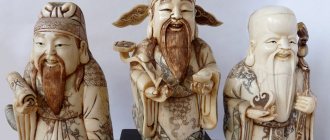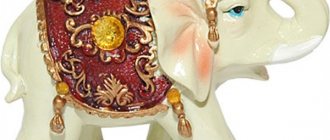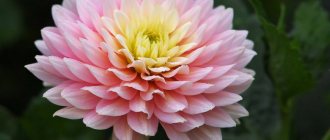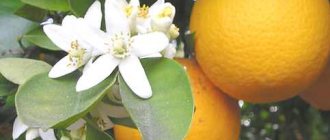Good afternoon friends! It’s been a while since I wrote anything for my favorite site, due to the fact that some changes have occurred in my life. I hope this will be a change for the better. A little later, in another article, I’ll tell you about them...
And now I would like to write about such a topic as poppies according to Feng Shui . One of my regular readers asked in the comments:
Tatyana, I apologize for the late response, but I think it’s better late than never.
Feng Shui poppies - their meaning and properties
Poppies, poppies... For us, people living in the south of Russia (this is where I live), these flowers are quite familiar. Many people grow them in their dachas or in the courtyards of private houses. We grow them mainly for decorative purposes, since poppies are bright, beautiful flowers that stand out in any flower bed, and, most importantly, are completely unpretentious to care for.
However, few people know about the real meaning and properties of this beautiful flower.
But first things first…
In Ancient Greece, for example, poppies were considered a symbol of calm and tranquility. The god of sleep Hypnos (father of Morpheus) was often depicted with a poppy wreath on his head, and the earth goddess Demeter (whose middle name is Mekona, which means “poppy”) was depicted with a poppy in her hands.
The kingdom of the god Morpheus himself was decorated with poppy fields; in later times, Christians considered them the flowers of angels.
Among other things, the poppy is a symbol of the suffering of Christ.
This beautiful flower has not been spared by the Chinese teachings of Feng Shui.
In Feng Shui, poppies, like peonies, primarily influence the love sphere in a person’s life. For lonely people, they play the role of a magnet and contribute to a fateful meeting. And in an already established couple they will help people find mutual understanding.
In my opinion, the most important property of poppy, which Feng Shui talks about, is its ability to open a person’s eyes to what is happening in his life regarding other people (this is especially necessary in the first stages of a relationship). Essentially, “take off your rose-colored glasses” and soberly assess the state of things. They will also help you understand confusing and difficult situations if they arise (usually in the later stages of a romantic relationship).
In addition to influencing the love sphere, according to Feng Shui, poppies also help improve all types of human relationships. This could be the relationship between children and parents (especially during adolescence), brothers and sisters, grandchildren and grandmothers, etc. In a word, they have a beneficial effect on relationships within the family.
Moreover, poppies, as I already said, are bright flowers that attract attention. This means that they have quite strong leadership energy. If a person is not confident in himself or has low self-esteem, then they can help him become more confident, energetic, purposeful, and therefore more successful.
I also think that this beneficial property of poppy will be useful for those who run their own business. Businessmen should keep an image of a poppy at their workplace.
Meaning of colors
| Balsam | impatience |
| Elder | sympathy |
| cornflower | grace |
| Gloxinia | love at first sight |
| Gardenia | secret love |
| Witch hazel | CONSPIRACY |
| Dahlia | sophistication, self-esteem |
| Geranium | nobility |
| Heliotrope | devotion, passion |
| Hibiscus | rare, graceful beauty |
| Hydrangea | coldness, indifference, heartlessness |
| Pink carnation | woman's love, innocent, first love |
| White carnation | contempt |
| Purple carnation | waywardness; unpredictable volatility |
| Red carnation | passion, obsession with love |
| Yellow carnation | neglect, disappointment, refusal |
| Dianthus striped | non-acceptance |
| Pear flowers | strong friendship |
| Datura | deception |
| Sweet pea | Gratitude |
| Oak leaves | force |
| Arbutus | only love |
Poppies as a feng shui talisman
As a rule, painted poppies are used as a talisman for the home. First of all, it's very beautiful. Take a look at modern modular paintings, or photo wallpapers with poppies. Secondly, it is the most durable compared to live poppies in a vase. At least because they do not like a lot of water and sunlight is vital for them. But this option is also possible.
You should also remember that according to Feng Shui, poppies should only be used in the house live or drawn, but not dried.
All kinds of herbariums are a taboo (!) in Feng Shui, as they carry the energy of death.
Slavs
- apotropaic plant. In magical practice, the “native” self-seeded M. is more often used, which blooms white in contrast to the field M. with red flowers. The main cultural function of M. is associated with his ability to counteract evil spirits: until the demon collects many scattered poppy seeds, he, according to legend, cannot move further and cause harm. In conspiracies and curses, the expressions “scatter with poppy seeds” or “sit down with poppy seeds” mean “disappear, perish, abyss” (Eastern Slavs), “sow poppy seeds between people” - “sow enmity” (Poles). Sometimes M.'s protective functions were explained by its hypnotic properties (see Insomnia), the ability to lull evil spirits and danger. M. was considered an effective talisman against the walking dead: it was placed in the coffin of a deceased person suspected of being a witch doctor, M. was poured into the grave and around the grave of a suicide, a hanged man, a sorcerer, saying: “Then you will enter the house when you collect this poppy (count it, eat it) " (Ukraine Poland). Ukrainians in the Carpathians showered the entire estate with M.-self-seeded, lying on the table on Christmas Eve, walking on the sun to prevent visits from the vampire. During the funeral procession, they threw M. after the coffin and scattered it along the road from the house to the cemetery. M. was showered in the corner where a woman in labor lay with her newborn (Czechs, Slovaks). In wedding ceremonies, they poured M. into the bride’s stocking (Voronezh region), and gave the newlyweds a poppy head with them to protect them from sorcerers and the evil eye. M. was poured into the barn and around the barn with the sentence: “Whoever collects this witch (white poppy) will take the spores from my cow”; after calving, they showered the cow and calf with the same words (Polesie, Transcarpathia, Slovakia, Croatia). The Ukrainians drilled the horn of a calving cow, poured consecrated moss into it and beat it with an aspen peg; A bundle of incense and self-sowing M. was tied to the right horn of the cow. On Christmas Eve, the owners went around the yard with Christmas bread, honey and M. and thickly sprinkled “wild” M. near the cowshed, “so that, in spite of everything, they could not begin to grow thin.” M. also protected people and livestock from snakes: on the eve of annual holidays, they sowed and fumigated the hut with poppy seeds, placing it on the window so that snakes would not crawl into the house; They showered M. on the cow so that the snake would not bite her. With M.’s help, it was possible to recognize a witch, for which it is necessary to scatter “native” M. along the road where cattle walk: then the witch who takes the milk of other people’s cows will have her own cow milked with milk with worms (Brest Polesie). According to other beliefs, the witch’s cow will not be able to cross the scattered M. and will turn back with a roar. In rain-making rituals, many poppy seeds are likened to raindrops, therefore, during a prolonged drought, poppy seeds were poured into a well, or three wells, or nine wells; they put M. in their mouth, ran to the well and poured it out; They tied M. in a knot and lowered him into the well on a thread, and when it started to rain, he pulled him out. This was done by a widow, old women or children (Volyn, Galicia, Polesie). According to some researchers, the mythical Makar or Makarka, to whom people in Polesie turn to with a request for the gift of rain, can be considered a personification of M. In productive magic and divination, many poppy seeds were associated with abundance and wealth. The Slovaks poured M. into the girls’ first font so that she would have many suitors; On Christmas Eve, Czechs fed chickens with poppy seeds, hoping to get from them as many eggs as the number of poppy seeds the chicken would peck. M. was part of ritual meals, including Christmas and funeral, and was also known as an additive to Lenten cookies; for example, in Ukraine, cakes with M. were baked on Ivan Kupala, on the Maccabees (August 1) and on other days. The widespread round dance game "Poppy", reproducing the process of growing M., has a magical productive meaning (See "Life of Plants"). Lit.: Sudnik T.M., Tsivyan T.V. Poppy in the plant code of the main myth (BaHo-Ba1sashsa) // Balto-Slavic studies. 1980. M., 1981. V.V. Usacheva < SMES
Places in the house for poppies
As for the location of poppies in a house (apartment), everything is quite simple. If you want to improve the relationship between spouses, then this is the love zone or bedroom (preferably near the bed). If you establish relationships with your household, the family area, the living room. If you want successful changes in your career, business, work - a success zone, an office, a workplace. Well, and so on. I think you understand the meaning, as usual, we put whatever zone we want to improve there.
That's all I have for today. Bye everyone. And happy feng shui to you!
East
In Persian culture, the poppy is a symbol of happiness, eternal love, joy; the wild flower hinted at the desire for an intimate relationship. Buddhists were firmly convinced that the poppy appeared after the falling asleep Buddha touched the ground with his eyelashes. In China, the flower was associated with success, beauty, relaxation and distance from the hustle and bustle. However, it later became a symbol of available women and brothels. In the early 19th century, after the Opium War, smoking this drug became so popular that the flower became associated with evil and decay.
Tattoo with a scarlet flower
Everyone knows that flowers depicted on the body are of great importance. What does the red poppy mean in this case? A tattoo with this flower has always been associated with death or sleep. And these two concepts are too close to each other, for example, lethargic sleep often duplicates the state of death, it is so difficult to distinguish them. This is all very strange, and people have been thinking about solving the mystery for decades.
Another meaning of such a pattern on the body is truth, devotion, fidelity. When deciding to decorate your body with poppy seeds, think about whether it’s worth it. No matter what meaning you put into the drawing yourself, there will always be some secrets and meanings unknown to us.
Polls say
Currently, the favorite color of Europeans is blue (40 percent of residents prefer it). The “rating” of green is 17 percent, red is 12 percent, yellow is 6 percent, orange is 5 percent. The remaining percentages come from shades of these colors, as well as white and gray.
Like long echoes that mix in the distance and there merge into a dark, deep unity, spacious as night and like light - like long echoes, fragrances, colors, and sounds answer one another. Charles Baudelaire
Scarlet flower today
And today the red poppy is a symbol of what? For example, to this day this flower is the emblem of the British Legion. Every year in the fall, artificial flowers are sold as a reminder of those who died in armed conflicts and two world wars. In Ukraine, for example, poppy is associated with fertility and endless open spaces. Petals were sprinkled on wedding loaves so that the newlyweds would have health and many children. Also in this country, the red poppy is a symbol of Victory; they have recently decided to use it at all official events.
Daisy
The daisy is one of the most common and well-known wild flowers. The name in English, daisy, is a corruption of the phrase day's eye, that is, “eye of the day”: the flower opens at dawn, and the underside of the petals is painted a soft pink color, as if reflecting the color of the sky at dawn. Shelley called the daisy a constellation flower that never sets. A comparison of daisies, scattered in abundance in the grass, with constellations appears in many other writers and poets.
In the language of flowers of the 19th century, the daisy signified innocence. According to writer Robert Tyas, it is a child's flower. Daisies are plentiful and easy to find, and the name often appears in nursery rhymes and games. Children wove wreaths from daisy flowers by splitting the stem of one flower with their fingernails and pulling the stem of another into the resulting hole. This simple watercolor captures the humble beauty of the daisy surprisingly accurately.
Latin name: Bellis perennis.
Meanings: beauty, fun, faith; I will never tell; innocence, fidelity, purity, simplicity.
Habitat: lawns, meadows, dune hollows, river banks.
Colors: Each petal, white with a pink tip, is an individual flower. The heart of a daisy is actually made up of many tiny yellow flowers.
The English word daisy comes from the expression "eye of the day", reflecting the way a flower opens to the sun and closes towards the night.
Daisy is a common diminutive version of the name Margaret: in French, the subspecies of the daisy is called marguerite.
Meaning of colors
| Jasmine | friendship proposal |
| Honeysuckle | the only disposition, bonds of love, loyalty to the beloved |
| Iris | wisdom, fearlessness |
| Irish bells | luck |
| Hyssop | purification, humility |
| morning glory | attachment |
| Reed | humility |
| Camellia japonica | modest superiority |
| Cabbage | utility |
| Medium bell | Gratitude |
| Viburnum evergreen | symbol, sign, distinction |
| Coreopsis | cheerfulness and fun |
| Clover red | zeal |
| Clover white | oath |
| Coriander | burning desire |
| Clover | burning desire |
| Crocus | happiness |
| Cactus | constancy |
| Calla lilies | beauty, the highest degree of admiration, respect, admiration |
| Calendula | grief, cruelty, pangs of jealousy |
| Mullein | good nature |
Forget-me-not
The symbolic meaning of the forget-me-not is self-evident, but the name forget-me-not, literally “forget me not,” came into English quite late and became popular after Coleridge mentioned it in his poem “A Keepsake” (1802), and also influenced by German folk tales.
Latin name: Myosotis sylvatika. The word Myosotis comes from the Greek μυοσωτίς, “mouse ear.”
Meanings: loyalty and devoted true love, memories; do not forget me.
Growing environment: moist soils, near lakes and rivers, in shallow water.
Colors: blue, lilac and pink.
According to German legend, when God was giving names to all the plants, one of them shouted: “Don’t forget about me, Lord!” To which he replied: “That’s what you will be called.”
In the 15th century, it was believed that those who wore this flower would not be forgotten by their lovers, so ladies often wore forget-me-nots as a sign of unfailing love.
Pansies
Pansies and forget-me-nots are among the most famous symbols of the language of flowers. The English word pansies, “pansies,” comes from the French pensées, “thoughts.” By the 16th century, this association was already well-established: for example, in Shakespeare’s play Hamlet, the mad Ophelia lists flowers and herbs with symbolic meanings familiar to the audience: “Here is rosemary, this is for remembrance; I ask you, dear, remember; but the Trinity color is for thoughts.” Trinity color is one of the names of pansies in Rus'.
Latin name: Viola spp.
Meanings: I think about you; fun; think about me; lightness of heart.
Habitat: garden.
Colors: blue, as well as many other colors; often the coloring resembles a face.
Musk cornflower paired with pansies says to a lover, “I’m thinking about our forbidden love.” American pioneers believed that bringing a bouquet of pansies or violets to a farmhouse in the spring would bring prosperity to the family.
Snowdrops
Snowdrops have been a favorite flower in English gardens since Elizabethan times. As they are one of the few species that bloom in winter, it is hardly surprising that snowdrops have come to represent hope. For some authors, for example Robert Tyas, they also mean consolation: with their appearance, snowdrops promise that spring will come, comforting and delighting us at the end of winter. Indeed, in French the snowdrop is called perce-neige, “piercing snow.”
Latin name: Galantus nivalis.
Meanings: friend in adversity; comfort and hope.
Habitat: forest.
Colours: white and green.
The mysterious magical plant "moth" in Homer's Odyssey, used as an antidote to the potion of the sorceress Circe, may have been the snowdrop. This plant actually contains the substance galangamine, which is used to treat Alzheimer's disease and helps improve memory.
According to legend, when Adam and Eve were expelled from the warm paradise straight into winter, an angel turned some snow flakes into snowdrops to give people hope that spring would eventually come.
The Latin name Galanthus means "milk flower".
The English word snowdrop has the same root as eardrop (an obsolete word for earlobe).
Wild strawberry
Strawberries are ascribed the meaning of ideal virtue. In some books, strawberry flowers are listed separately as the embodiment of Foresight. The connection between strawberries and the idea of virtue may be based on the fact that the berries have such a delicate taste: the fruits of wild strawberries are much smaller than those of the cultivated varieties that we eat today; but at the same time much sweeter. They are one of many edible wild plant species that can be found on walks, so they were often collected and eaten by children.
Latin name: Fragaria vesca.
Meanings: impeccable virtue, perfection, foresight.
Habitat: hillsides, along paths and roads, meadows, young groves and clearings.
Colours: white flowers and red berries.
The results of archaeological excavations suggest that people have been enjoying strawberries since the Stone Age.
Wild strawberries were first cultivated in Persia, and then the seeds were brought along the Silk Road to Europe.
Helps digestion, removes tartar and prevents gout attacks.
Primrose
Primroses and wild strawberries are associated with warm memories and happiness. Most writers; touching on the topic of the language of flowers, they agreed that primroses - originally a symbol of spring - signify youth. The English word primrose comes from Middle Latin prima rosa, "first rose" of the year, and also from Old French primerose.
Latin name: Primula vulgaris.
Meanings: early youth, eternal love; I can not live without you; modest dignity and silent love, red flowers mean dignity without care.
Habitat: open forests and near shady hedges.
Colors: pale yellow, sometimes pink.
A harbinger of spring, the primrose was the favorite flower of British Prime Minister Benjamin Disraeli. The leaves of this plant can be brewed as tea and the young flowers are the main ingredient in primrose wine. “To go by the way of the primroses” means to “live in pleasure,” as it is said in William Shakespeare's play Hamlet.










